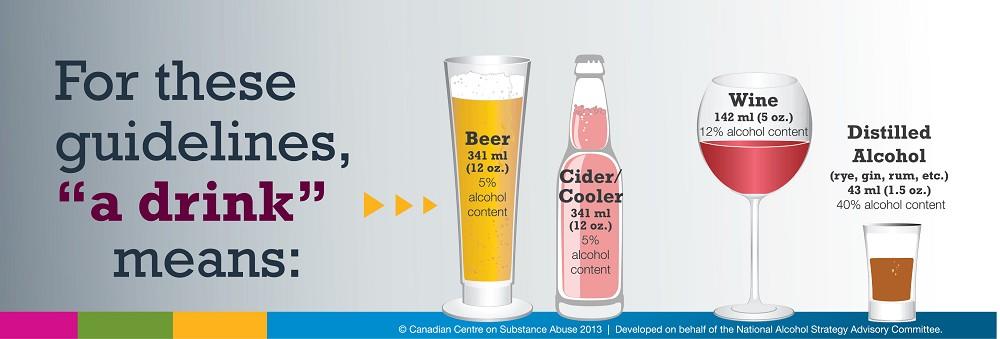Party Foul: Let’s Talk About Low-Risk Drinking
by Sara Chow

With so many great new food spots in town and local brews on tap, one of the most common activities for get-togethers is to go for ‘drinks and apps’. Food, friends, music and alcohol are good mix for a great time, but too much alcohol can lead to unexpected harms.
Talking about low-risk drinking might not be the party conversation of the year, but since alcohol is deeply embedded in our society it is important to know that there are risks associated with drinking it. This is especially important as trends show that Canadians are consuming an increased amount of alcohol. In fact, the Canadian Centre on Substance Abuse (CCSA) reports that since 1996 there has been a 14% increase in alcohol consumption per capita.
There are known short-term risks associated with alcohol consumption (e.g. injury and drinking and driving), but there is less awareness about the long-term risks associated with drinking alcohol.
Cancer Care Ontario recently released a report about the affects of drinking alcohol and cancer. Did you know that alcohol (specifically the ethanol found in alcohol beverages) is linked to at least eight types of cancer, including cancers of the mouth, pharynx, liver, breast, colon and rectum? It is also associated with liver cirrhosis, hypertension, epilepsy, pancreatitis, low birth weight and stroke, to name a few.
Research suggests that, during digestion, the broken down products of alcohol may be carcinogenic or that they may act as solvents allowing carcinogens to penetrate cells more easily. Drinking alcohol can also increase estrogen hormone production which can increase the risk of developing breast cancer. Additionally, like ‘drinks and apps’ are paired together, drinking and smoking often are too, which doubles health risk.
How can you lower your health risks? Follow the CCSA’s Low-Risk Alcohol Drinking Guidelines that recommend that women can reduce their long-term health risks by drinking no more than 10 drinks a week, with no more than 2 drinks a day most days. Men can reduce their risk by drinking no more than 15 drinks a week with no more than 3 drinks a day most days. Keep in mind that 1 standard drink is a 341 ml or 12 oz bottle of regular strength beer (5%), a 142 ml or 5 oz glass of wine (12%) or a 43 ml or 1.5 oz shot of distilled liquor.
To be clear, choosing to drink alcohol isn’t necessarily the problem, but choosing to drink too much could be. Go out and enjoy your drinks and apps but make responsible choices that will protect your safety and health.
For more information on low-risk drinking, visit:
www.ccsa.ca